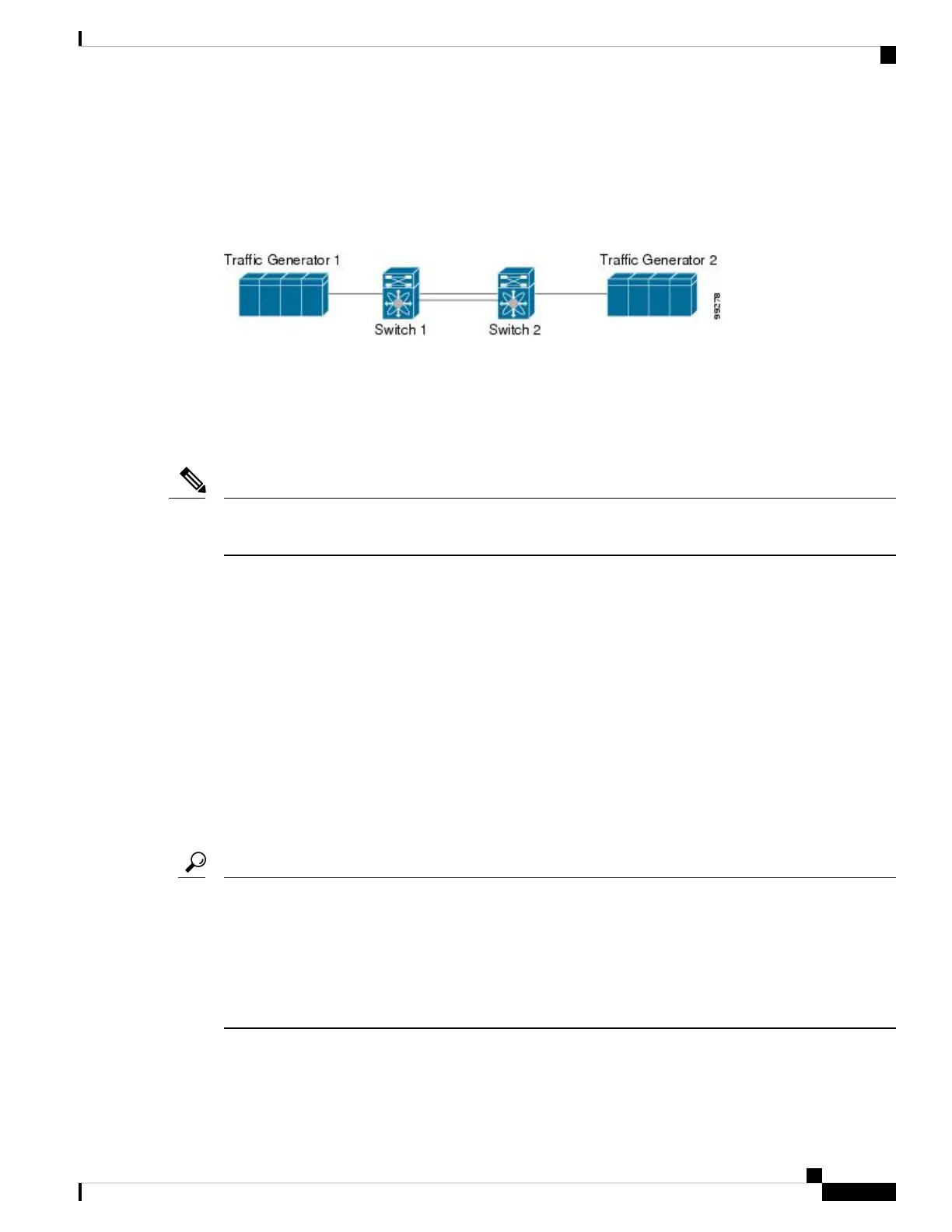About Reordering PortChannel Frames
When a link change occurs in a PortChannel, the frames for the same exchange or the same flow can switch
from one path to another faster path.
Figure 51: Link Congestion Delivery
In Figure 51: Link Congestion Delivery, on page 197 , the port of the old path (red dot) is congested. In this
scenario, Frame 3 and Frame 4 can be delivered before Frame 1 and Frame 2.
The in-order delivery feature attempts to minimize the number of frames dropped during PortChannel link
changes when the in-order delivery is enabled by sending a request to the remote switch on the PortChannel
to flush all frames for this PortChannel.
Both switches on the PortChannel must be running Cisco SAN-OS Release 3.0(1) for this IOD enhancement.
For earlier releases, IOD waits for the switch latency period before sending new frames.
Note
When the in-order delivery guarantee feature is enabled and a PortChannel link change occurs, the frames
crossing the PortChannel are treated as follows:
• Frames using the old path are delivered before new frames are accepted.
• The new frames are delivered through the new path after the switch latency drop period has elapsed and
all old frames are flushed.
Frames that cannot be delivered in order through the old path within the switch latency drop period are dropped.
See the Configuring the Drop Latency Time, on page 199.
About Enabling In-Order Delivery
You can enable the in-order delivery feature for a specific VSAN or for the entire switch. By default, in-order
delivery is disabled on switches in the Cisco MDS 9000 Family.
We recommend that you only enable this feature when devices that cannot handle any out-of-order frames
are present in the switch. Load-balancing algorithms within the Cisco MDS 9000 Family ensure that frames
are delivered in order during normal fabric operation. The load-balancing algorithms based on source FC ID,
destination FC ID, and exchange ID are enforced in hardware without any performance degradation. However,
if the fabric encounters a failure and this feature is enabled, the recovery will be delayed because of an
intentional pausing of fabric forwarding to purge the fabric of resident frames that could potentially be
forwarded out-of-order.
Tip
Cisco MDS 9000 Series Fabric Configuration Guide, Release 8.x
197
Configuring Fibre Channel Routing Services and Protocols
About Reordering PortChannel Frames

